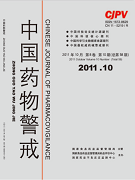|
|
The Evaluation of Diagnoses and Management in Cesarean Scar Pregnancy with Color Doppler Ultrasound
ZHANG Xiao-ying, PENG Yan-li, CHEN Tao, ZHU Ya-li, WEI Jin-ming, WANG Yan, JIA Juan
2011, 8(10):
587-589.
Objective To evaluate our experience and diagnosis of cesarean scar pregnancy(CSP) with color doppler ultrasound. Methods From March 2006 to June 2010, 3 cases of cesarean scar pregnancy were diagnosed using color doppler sonography and treated conservatively to preserve fertility. Gastational age, sonographic findings, β-human chorionic gonadotropin(β-hCG) levels, flow profiles of transvaginal color Doppler ultrasound, and trasabdominal sonography during treatment were recorded. Results The gastational sac(GS) ages were diagnosed for about 6 weeks. The time interval from the Cesarean section to the diagnosis of Cesarean scar pregnancy was from 9 months to 126 months. Embryonic period diagnosed by color doppler sonography were as follow: the sizes of GS ranged from 0.8cm×0.4cm×0.5cm to 2.2cm×2.1cm×1.0cm, all with cardiac activity, the crown-rump length ranged from 0.3cm to 0.7cm, the anterior myometrial thickness to the csp were measured 0.5cm with rich color flow show. The patients were treated as follow: ultrasound-guided dilation and curettage under hysteroscopy within 24 hours following uterine artery embolization(n=2), the failure of uterine artery embolization and systemic methotrexate(MTX) injection, the vial GS validated by transvaginal ultrasound, then getting out and dilation and curettage of the csp under hysteroscopy by following-up(n=1). Conclusion Transvaginal ultrasound plays an important and useful role in the early diagnosis of the CSP. During operation under the abdominal ultrasound online screening, it is obvious for the shorteness of opareative time, the decrease of operator's blindness and the safeguard of operative security to dilate and currette.
References |
Related Articles |
Metrics
|
